
(Click here to see a higher-definition version!)
The Platform contains ten major nations, each ruled by a different leader as independent city states with their own associated territories. In most cases, the capital of each city-state shares its name with the nation as a whole (although Rett is an exception).
Western Cities
Dump

Dump is a decently large city on the banks of the Turquoise Run. The city is ruled by an elected mayor and a small cabinet of officials that the major appoints, with terms lasting five years. The center of the city is well-developed; home to the richer population and shops, while the outer regions are cheaper, normally residential housing. Such homes are often older apartments. Originally a trading hub for some of the first larger groups of desert-born, it was founded in 524, making it the oldest official city on the Platform. Many mining operations surround Dump, and though farming is somewhat difficult in the dry climate, it is able to support itself agriculturally thanks to the nearby water source. Its population is the most varied of any city on the Platform, and also houses the second largest number of humans. It has the most odders by far, and is the residence of about a third of the extant population of desert-born. The city’s unusual name, “Dump” comes from its original name, “Dumpe”, which related to the sensation of falling into the world suddenly, as many desert-born do. However, it was changed due to most people forgetting the “-e” anyway. Dump’s national colors are tan, black, and white.
Bludmar Abbey
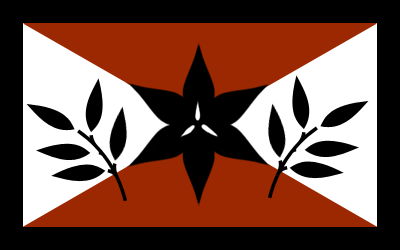
Bludmar Abbey is the northernmost settlement on the Platform, founded by and named after Bludmar Frasier. The Abbey was first recognized as sovereign in 785, though it only really started to grow as Marreism spread over the next several decades. Many people moved there during this period, and the Abbey became surrounded by a decently-sized settlement that stretched across the eastern shore of the Lake of Leilani. The city is ruled over by the bureaucratic leader of the abbey, called the Bludmar’s Abbot. The city has relatively few imports and exports, though does sustain itself on some farming, artisan goods, tourism, and donations from Marreist people all over the Platform. It’s quiet and very religious.
Verval
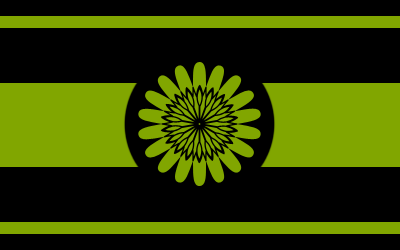
Verval is the largest city on the Platform by surface area. It was founded by Reuben Sherman in 943, originally a part of Dump that was broken off in order to prevent a power struggle between Reuben and his sister Deliah, both of whom wanted to rule. Even before its independence, it was settled quickly because of its plentiful forests, fertile soil, and close proximity to the desert (and desert-borns who needed a home). The land was obtained by Dump after the completion of the Masker War, as it was originally populated by maskers before their genocide. The ruins of their city, Maskepol, can still be seen to the northeast. It is both very large and very populated, with a wide range of inhabitants. However, as the lush forest city continues to grow, it has been presented with numerous overpopulation problems from incoming desert-borns. As such, it has recently resorted to forcibly evicting young desert-borns and sending them either to suburbs and or other regions entirely. This practice has not been received well. Verval’s national colors are green and black.
Trells

Trells is a decently new city, founded in 987. After a shortage of food and other agricultural products in the late 900s, Verval sent an expedition of farmers and agricultural engineers to the largely unclaimed land to the east in order to produce more food for the Platform’s growing populations. They succeeded, and the city is now the number one producer of agricultural products in the Platform. The city is built on the shores of the Verdant Delta, and as the region floods annually, many ocean-facing regions of the city are built on the water and commuted to and from by boat. Trell’s national colors are yellow, red, and white.
Eastern Cities
Vira-Teakala

Vira-Teakala is mostly populated by starks and humans, though there are some nams and odders. It was founded in 589 by Rimewell Sehe and Viraldyne and Teakala Adourian, making it a fairly old city. The city is often casually referred to as “Veeta” (as “Vira-Teakala” gets annoying to say all the time). Its government is ruled by monarchs descended from the Adourian family, though they mostly function as figureheads. Most official decisions are made through a senate system, lead by an elected prime minster serving for four-year terms. The city thrives on sea exports and technological advancements. Veeta’s national colors are silver and sea green. Veeta is considered the holy city of Rimea, and it and Teak (as Teak began as a colony of Veeta) are the only two cities to have an appointed Sehen.
Somber
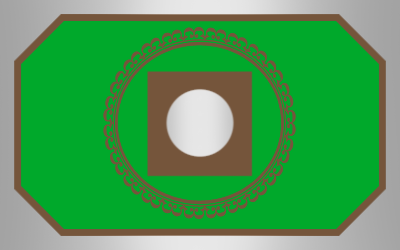
Somber was founded in 795. It was founded due to disagreement between the Veetan population over identity of the murderer of Octolabrous Adourian (the previous Sehen). Those who sided with Sombakarta Montgomery, who claimed that Alkavire Adourian was the perpetrator were eventually forced to leave the city to protect their leader. After a short journey north, they founded their new city, named Somber, on the shores of the Northern Gulf, as well as a new form of Rimea known as Novamea. Sombakarta (who split his name into Somba Karta) was eventually named both the new Kartasehen and the king of the city. To this day, it is ruled in an inherited monarchy, with a line of humans descended from Somba Karta on the throne and only those that are blood-related to him being eligible to rule. It’s mostly a logging and manufacturing city that’s known to the other cites as being quiet and quaint, but most people that live there have been doing so for a long time and are rather set in their ways. As a result, its residents are often somewhat cold to outsiders and are very traditional. Very few desert-born live here, as they are often ostracized and viewed as being of very low status (in the Platform’s past, those that were desert-born or didn’t have magic were viewed as being helpless and unintelligent. While Somber has, for the most part, shed the prejudice against non-magicers, the dislike of desert-borns still remains. This is partially due to the fact that there just aren’t many desert-born there, so the injustices they face are often overlooked) due to both traditional attitude and the excision of desert-borns from their religion. The majority of residents are starks or humans. Somber’s national colors are green, brown, and silver.
The Click Cities

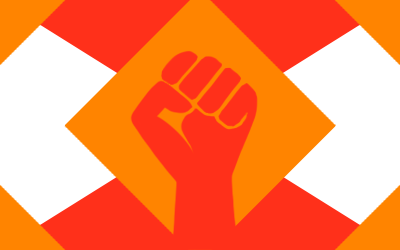
The Click Cities, mostly just known as Click, are split into East Click and West Click. The original Click City was formed by a group of lower-class emigrants from Somber in 976. However, though there was uneasy peace for a time, the city and territory was eventually split in 984 due to an extreme political disagreement between two parties about how the new government should be formed. Though the cities are officially separated and have been for a long while, extremist groups on both sides have had violent confrontations up to this day and there are malicious gangs within both cities. There is a small black market occurring here, mostly made up of ammo and weapons. The Clickish economy is mostly powered by trade and sea products. Culturally, Click is very similar to Somber. However, the hatred of desert-borns and non-magicers is much less prevalent here. East Click’s national colors are green and blue. It is ruled by a queen who rules for life, though is elected into power. The city has rather strict laws and fewer personal freedoms than West Click, though it tends to run more smoothly. West Click’s national colors are red and burnt orange. It is ruled by an elected president and a small cabinet of elected officials, similar to the government of Dump. West Click has many personal freedoms and the laws are more laid back and lenient, though there have been issues with gang violence in the city as of late.
Teak
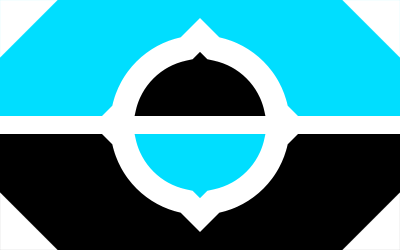
Teak is, essentially, a large, hollow, metal island in the middle of the ocean. It was created to be a mining location meant to allow access to the rich iron deposits on the ocean floor. More and more miners and their families, as well as engineers, magicers, and political officials moved to the location to assist, and it eventually developed into its own city. It established partial independence from Veeta in 996, lead by members of the Hallia family (which are tangentially related to Veeta’s royals). Teak’s national colors are black, white, and blue.
Rettian Cities
Rett

Rett is almost exclusively populated by pennies. It was founded in 742 by the efforts of Skaelette Drammer, though it existed long before this as scattered independent tribes. The city state was once much larger, covering the territory now occupied by Trells, but has since withdrawn to its current size, surrounded on all sides of the Rettian peninsula by mountains. In addition to physical isolation, the city is also socially isolated from most other cities on the Platform due to a decision made by an early rex to cut off all interactions with the outside world. It has only recently begun to open up, beginning to share its unparalleled medical knowledge and various resources it has access to as a port city. Rett’s national colors are royal blue, gold, and to a lesser extent, white. Unusually, its capital city (Skylar) does not share its name with the city state itself. The government is ruled by both a rex (monarch) and an elected council. These two balance each other out and help to make fair decisions. Normally, due to the drastically larger amount of females, the ruler is a woman. In fact, a male ruler has only once occurred in recorded history as of 1047.
